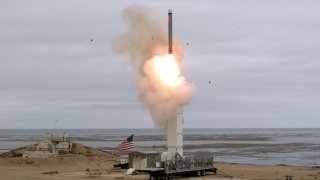What You Don't Know About the Defense Industrial Base
Is the current American defense industrial base large enough? And if not, what should we do about it?
Originally, Baruch’s “little school” had a major mission: studying industrial mobilization in time of war. The original concept of the school succeeded. By December 1940, as Europe was once again engulfed in war, and dark clouds were gathering in the Pacific, President Franklin Roosevelt declared that the United States would have to be the “Arsenal of Democracy.” And it was.
But over time, the “little school’s” mission shifted from studying industrial mobilization to merely educating leaders to manage logistical resources.
Perhaps the time has come for industrial mobilization to again receive the attention Baruch intended. We need to know “what we have, what we need, and how and where we can get it.” We need to understand fully the key sources of both raw materials and key components. The Defense Department needs to better understand the financial motivations and risk assessments of commercial firms in the defense market. It may be that the government will have to consider sustaining excess capacity in certain key areas, capacities that seemingly have no immediate need but would be essential during a complex, protracted conflict.
The Pentagon will soon release a revised National Defense Industrial Strategy. Like similar efforts, it is likely to be more aspirational than operational – but it’s a necessary start. And we need to get started.
About the Author
M. Thomas Davis is a retired Army Colonel who worked on major pentagon budget issues. He is also a retired senior defense industry executive.
This article was first published by RealClearDefense.

